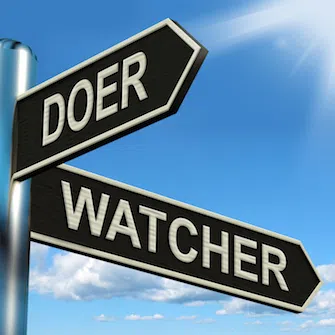Define success, be honest and clear, and provide details and benchmarks.
Nothing you are about to read regarding employee performance will be original or groundbreaking. Most of it is widely known and based on common sense. Starting is just a matter of making a commitment.
Working with your team to systematically improve employee performance can be challenging, frustrating, and rewarding all at once. But it is one of the most important leadership responsibilities you have. To be successful, a leader needs to have two important prerequisites: a well-defined vision of success that is communicated to everyone all the time; and a step-by-step system to propel individual performance supporting that definition.
A vision of success is a detailed picture of what success looks like, whether for an individual, a group, or an organization. Leaders need to articulate the organization’s definition of success to employees every chance they get. This includes how it applies in a singular instance (a project, a proposal, a customer engagement) and on a larger scale (organizational goals, 3–5 year plan, etc.). A critical predictor of the success of improving employee performance is how well a leader/ supervisor and the employee understand what success looks like for the individual whose performance is being evaluated. Having mutual agreement on this keeps performance evaluations objective and focused on positive improvement.
So, if you haven’t been effectively communicating what success means at your company, start to do so immediately. This must be going on in the background as you follow these four steps to improve individual performance:
1) Have a candid, detailed conversation about areas where the employee’s performance is unacceptable, deficient, does not meet expectations, or is inconsistent with company objectives. This is the step that I most often see handled poorly or skipped altogether. Many people dance around performance issues or sugar-coat their delivery because they don’t want to hurt the employee’s feelings, or they fear the confrontational nature of difficult, emotional conversation. Unfortunately, “easing” into this discussion guarantees misunderstanding and prevents discussion of details about what is needed for improvement, including a concrete benchmark against which to measure improvement. By trying to be “soft,” supervisors make the task of helping to improve employee performance that much more difficult.
Good leaders must be willing to confront employees in a candid, direct way about their performances. I have found this conversation to be most effective if I am well prepared (possibly even having rehearsed what I’ll say with a trusted colleague), and if I deliver the feedback taking personal opinion out of the discussion. It’s about the employee’s performance in the context of what success looks like for that individual’s future, not about how I would do the job, or elements of the individual’s personality.
2) Define success for the individual and his role in the organization. This includes qualitative and quantitative criteria, as well as a discussion of how the individual is and should be perceived by others. Some criteria can be subjective, but also include objective criteria, the results of which can’t be disputed because they are measured.
3) You and the employee examine the continuum of where he is today versus the definition of success. What needs to happen to move along the continuum? What is the responsibility of the employee? What can you as leader/ supervisor do? Make sure the employee understands that it is his responsibility to improve performance. Your role is to describe success, and make resources reasonably available to the employee. Your role is not to take responsibility for the improvement. A common mistake is supervisors/leaders wanting to help the employee, and in the process, transferring much of the responsibility for performance improvement to themselves. This is very dangerous and is a significant impediment to a healthy process. As Bob Prosen, author of Kiss Theory Goodbye so aptly put it, “we are responsible to people, not for people.”
4) You and the employee can build a list of action items that you both agree, if accomplished, will elevate the employee’s performance toward the agreed-upon definition of success. The list should be clear, measurable, and aggressive.
Needless to say, it is important to capture all of this in written form that is clear and detailed, and will provide a full account of the process and agreements when you review it later with the employee to evaluate performance improvement.
You’ve agreed on what success looks like, where the individual is now, and what action needs to be taken to move from point A to point B. Now, you observe and support the individual, see how he reacts, and the level of responsibility and urgency with which he attacks the challenge.
Paul Grunau is the chief operating officer of APi Group Inc., a billion dollar holding company for more than 32 independent construction and construction-related businesses with 9,000 employees in over 150 locations. Paul is a graduate of Brown University, where he received a bachelor’s in economics. He completed his master’s of management degree from the Kellogg School of Management at Northwestern University.


